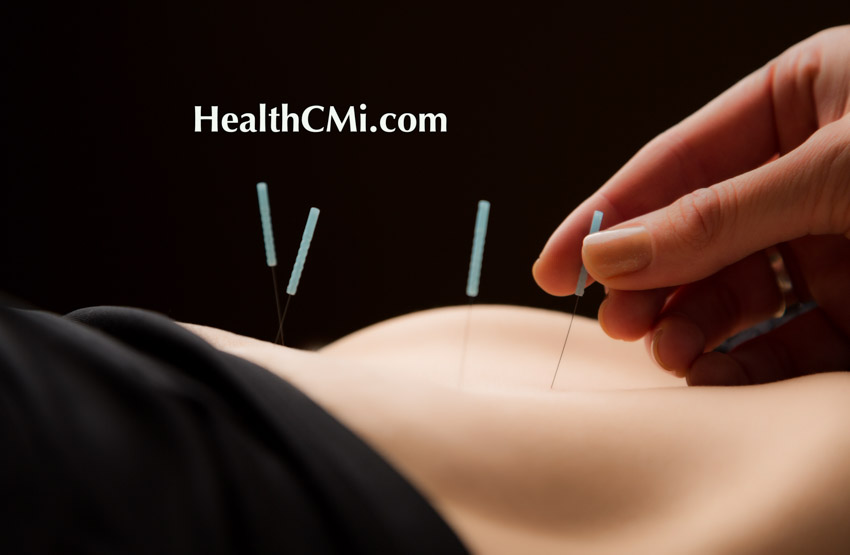Acupuncture is effective for the treatment of adenomyosis, a disorder characterized by tissue growing into the uterine wall that normally lines the uterus. This endometrial tissue disorder may not produce symptoms or may lead to heavy or prolonged menstrual flow, local pain, or painful intercourse (dyspareunia).
Researchers in Shanghai Yueyang Hospital Affiliated to Shanghai University of Traditional Chinese Medicine and Fudan University Affiliated Maternity Hospital conducted a clinical trial, comparing the efficacy of warm needle acupuncture and that of GnRH-a (gonadotropin releasing hormone) in treating adenomyosis (cold-stagnation, blood-stasis type). The researchers find acupuncture an effective treatment protocol that improves patients’ quality of life.
Observational parameters included uterine volume, a Numerical Rating Scale (NRS) for menstruation pain, a symptom score for menstruation abnormalities, and the Endometriosis Health Profile-5 (EHP-5). For all three parameters, higher scores indicate increased severity. Additionally, serum CA125, luteinizing hormone (LH), follicle-stimulating hormone (FSH), and estradiol (E2) levels were observed and assessed.
The results show that both treatment protocols reduced the uterine growth volume. NRS scores were approximately the same prior to the study (at around 5). After the treatment, patients in the drug control group experienced absence of menstruation. Thus, NRS in this group dropped to zero.
In the warm needle acupuncture group, the figure changed to 2.97 ±2.01. EHP-5 dropped in both groups, with the bigger decline (more improvement) shown in the warm needle acupuncture group (from 33.0 to 17.5). The symptom score for menstruation abnormalities presented a significant increase in the control group, climbing from 1 to 26. By contrast, the figure in the warm needle acupuncture group decreased from 3 to 2 points.
A notable decrease presented in the GnRH-a group (102.17 to 91.76). The decline in the uterine volume in the warm needle acupuncture group was 92.76 to 85.98. The same is true for serum CA125. GnRH-a more significantly downregulated CA-125, but at the same time, levels of LH, E2 and FSH were significantly reduced with the use of GnRH-a. The decreased LH, E2 and FSH levels could lead to amenorrhea, severely influencing patients’ quality of life. Therefore, researchers consider that using warm needle acupuncture is more advantageous than GnRH-a when accounting for adverse effects. GnRH-a is effective, but has unwanted side effects but the acupuncture did not produce unwanted side effects.
The following outlines the research treatment protocol. Statistical baselines were the same in the 2 groups. Patients’ age range was 36 to 38 years and the course of condition averaged 5 years. In the warm needle acupuncture group, patients first took a supine position. Needles (0.25 mm × 40 mm) were sterilized and perpendicularly inserted to a depth of 25 to 35 mm. The following points were used at this stage:
- SP10 (Xuehai)
- ST36 (Zusanli)
- SP8 (Diji)
- SP6 (Sanyinjiao)
- EX-CA1 (Zigongxue)
- CV4 (Guanyuan)
A twisting-twirling manipulation was applied for one minute. Then, moxa (20 × 25 mm) was connected to the needles at Zusanli, Sanyinjiao, and Guanyuan. This stage lasted for approximately 20 minutes. Next, patients took a prone position. Longer needles (0.30 × 70 mm) were applied at bilateral Ciliao. Needles were inserted into the posterior sacral foramen. Insertion length was 40 to 70 mm. After 20 seconds of manipulation, the needles were removed. Treatment commenced the first week after patients’ menstruation cycle and was conducted twice a week, except during menstruation. In the drug control group, GnRH-a or triptoelin injection (3.75 mg) was administered intramuscularly every 28 days, totaling three doses. The result indicate that both drug monotherapy and acupuncture monotherapy produced significant positive patient outcomes, with acupuncture have the advantage of not producing adverse effects.
Reference:
Wu Chuting, Li Xinrong, Dong Xiaoyan, Li Mingchang, Hu Jiawei, etc. Efficacy observation of Treating Cold-stagnation and Blood-stasis Type Adenomyosis, Shaihai Journal of Acupuncture, July 2022, Volume 41, Issue 7, DOI:10.13460/j.issn.



